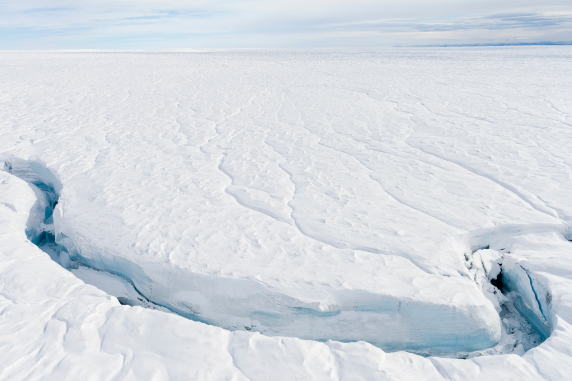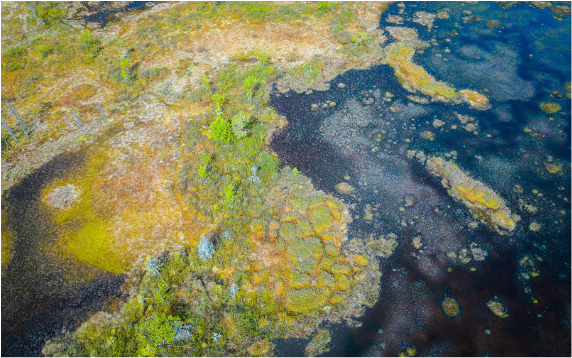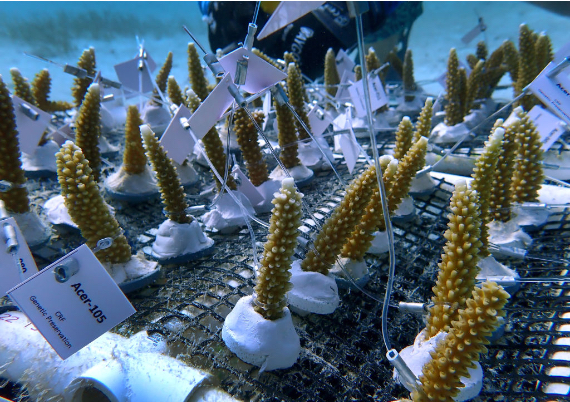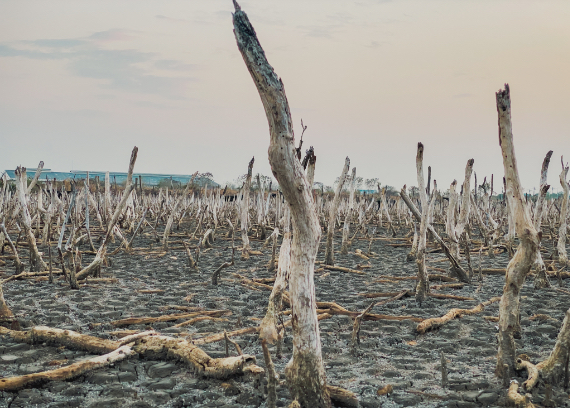Science needs facts, figures and metrics, and climate change science is no different. The key metric used, which is well known, is the increase in global average temperature, which according to the 2015 Paris Agreement must be kept below 1.5 to 2°C above pre-industrial levels. But to measure the state of the climate, scientists need more information. In 2009, a group of researchers identified nine planetary boundaries for the overall environment that must not be crossed to maintain the Earth’s habitability; six of them have already been exceeded.
Climate change is one of these boundaries, but it is a system of many parts. Scientists have therefore identified components of the Earth system that have tipping points that must not be crossed at the risk of accelerated and possibly irreversible changes. The most comprehensive assessment to date was launched at the COP28 climate summit in Dubai in 2023, involving more than 200 researchers from over 90 organisations in 26 countries, led by Tim Lenton of the University of Exeter and supported by the Bezos Earth Fund. The project identifies 26 tipping points spread across the cryosphere, the biosphere and the circulation of the atmosphere and oceans.
Cryosphere: Greenland ice
In the cryosphere, Earth’s ice, the authors have identified six tipping points. The first, and one of the most important, concerns the Greenland ice sheet, the second largest in the world after Antarctica. Based on recent observations and numerical modelling, the authors conclude that the critical threshold is at a warming of 0.8 to 3°C, so we are already in this range. The collapse of the Greenland ice sheet would be irreversible, raising sea levels by seven metres (over centuries) and affecting ocean and atmospheric circulation.

Cryosphere: Antarctic Ice
In Antarctica, scientists have identified critical tipping points in the West Antarctic Ice Sheet— located between the Ross and Ronne ice shelves and including the glaciers that drain into the Amundsen Sea—and in the East Antarctic sea basins. For the latter, a higher warming threshold of 2 to 6°C is estimated, but for the western section it is estimated to be 1 to 3°C, within the current temperature range. Melting of both masses would affect oceanic and atmospheric circulation, but while the western ice would raise sea level by up to three metres, the eastern ice could raise sea levels by up to 19 metres. There is a third tipping point in the East Antarctic continental ice, which has a higher threshold of up to 10°C, but whose melting would raise sea levels by an apocalyptic 34 metres.
Cryosphere: Glaciers and permafrost
The two remaining tipping points in the cryosphere concern mountain glaciers outside the polar regions and permafrost. Unlike the former, these would have regional rather than global impacts, and their thresholds vary. Melting glaciers lead to water shortages, ecosystem degradation, avalanche hazards and sea-level rise. Melting permafrost, which the authors include among the five thresholds we are already crossing, damages ecosystems and increases greenhouse gas (GHG) emissions.

Biosphere: Corals
Researchers have identified 16 tipping points in the biosphere. Among the five that are already being exceeded by current warming is the death of warm-water corals, which has been affecting regions such as Australia’s Great Barrier Reef for years. With a maximum threshold temperature rise of 1 to 1.5°C, coupled with acidification and atmospheric CO2 concentrations above 350 parts per million (currently above 400), this ecosystem is at critical risk. Its disappearance will lead to the collapse of coral-dependent marine communities (up to 25% of species) and the loss of coastal protection.

Biosphere: Other ecosystems
In addition to corals, the most critical tipping points are the Amazon rainforest, marine kelp forests and lakes, followed by seagrass meadows, boreal forests, fisheries, savannahs, mangroves, drylands and others. The overall impacts of ecosystem degradation include loss of biodiversity, disruption of rainfall patterns and the hydrological cycle in large parts of the world, and increased GHG emissions, which in turn exacerbate global warming.
Atmosphere and oceans: North Atlantic subpolar gyre
Finally, four tipping points have been identified in the atmospheric and oceanic circulation systems. Of these, the North Atlantic subpolar gyre joins Greenland, West Antarctica, permafrost and corals on the list of five tipping points that we are already crossing. This gyre is a counter-clockwise current between Greenland and the Labrador Peninsula. With an estimated tipping point of 1.1 to 3.8 °C, it is expected to collapse within decades, affecting not only marine ecosystems but also increasing the frequency of summer heat waves.

Atmosphere and oceans: Other currents
The Atlantic gyre is part of the Atlantic Meridional Overturning Circulation (AMOC), which is also one of the major tipping points, and many studies have warned of its possible collapse, reducing the forecast from centuries to decades. The two remaining tipping points are the Southern Meridional Overturning Circulation (SMOC) and the West African monsoon. Although there are uncertainties about critical thresholds, the authors warn that in these and other cases, their models “likely underestimate tipping point risks. The world is largely flying blind into this vast threat.”
Comments on this publication